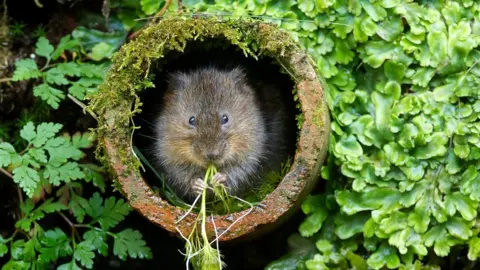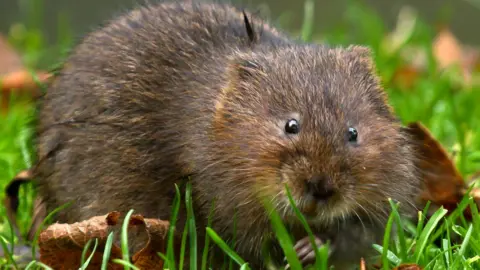Water voles found in Lincolnshire beck
 MarkBridger/Getty Images
MarkBridger/Getty ImagesA "significant population" of endangered water voles has been discovered in Lincolnshire.
An ecological survey undertaken at Branston Beck, near Lincoln, revealed 30 breeding pairs.
Water voles are usually found in chalk rivers, but since the 1950s numbers have decreased by more than 90%.
Paige Donnelly, from the Lincolnshire Rivers Trust, said the survey results were encouraging.
Ms Donnelly said the once common creatures, famously depicted as 'Ratty' in Kenneth Grahame's children's tale, The Wind in the Willows, were under serious threat from habitat loss and predation by the non-native American mink.
She said the Branston survey also showed they were concentrated in a small area, "hanging on to the habitat that's good".
"This discovery demonstrates that there is potential for this beck to sustain larger populations of water voles, if it is restored and improved," she said.
 suerob/Getty Images
suerob/Getty ImagesThe survey was part of the Bringing the Limestone Becks Back to Life project, which aims to restore the habitat for water voles, and other species.
Work in Branston includes planting native wetland vegetation and providing a suitable environment for the water voles to burrow.
David Hutchinson, from the Environment Agency, which is involved in the project, said changes to limestone becks, such as straightening and deepening, have led to significant habitat change, with the loss of animals and plants.
"We have seen from our work with partners that the restoration of more natural habitats is critical to ensuring that a diverse range of species, including water voles can thrive," he added.
The Heritage Lottery funded-project, which also involves the Wild Trout Trust, is restoring limestone becks in the Lincolnshire villages of Branston, Nettleham, Welton, Scopwick and Dunston.

Follow BBC East Yorkshire and Lincolnshire on Facebook, Twitter, and Instagram. Send your story ideas to [email protected].
